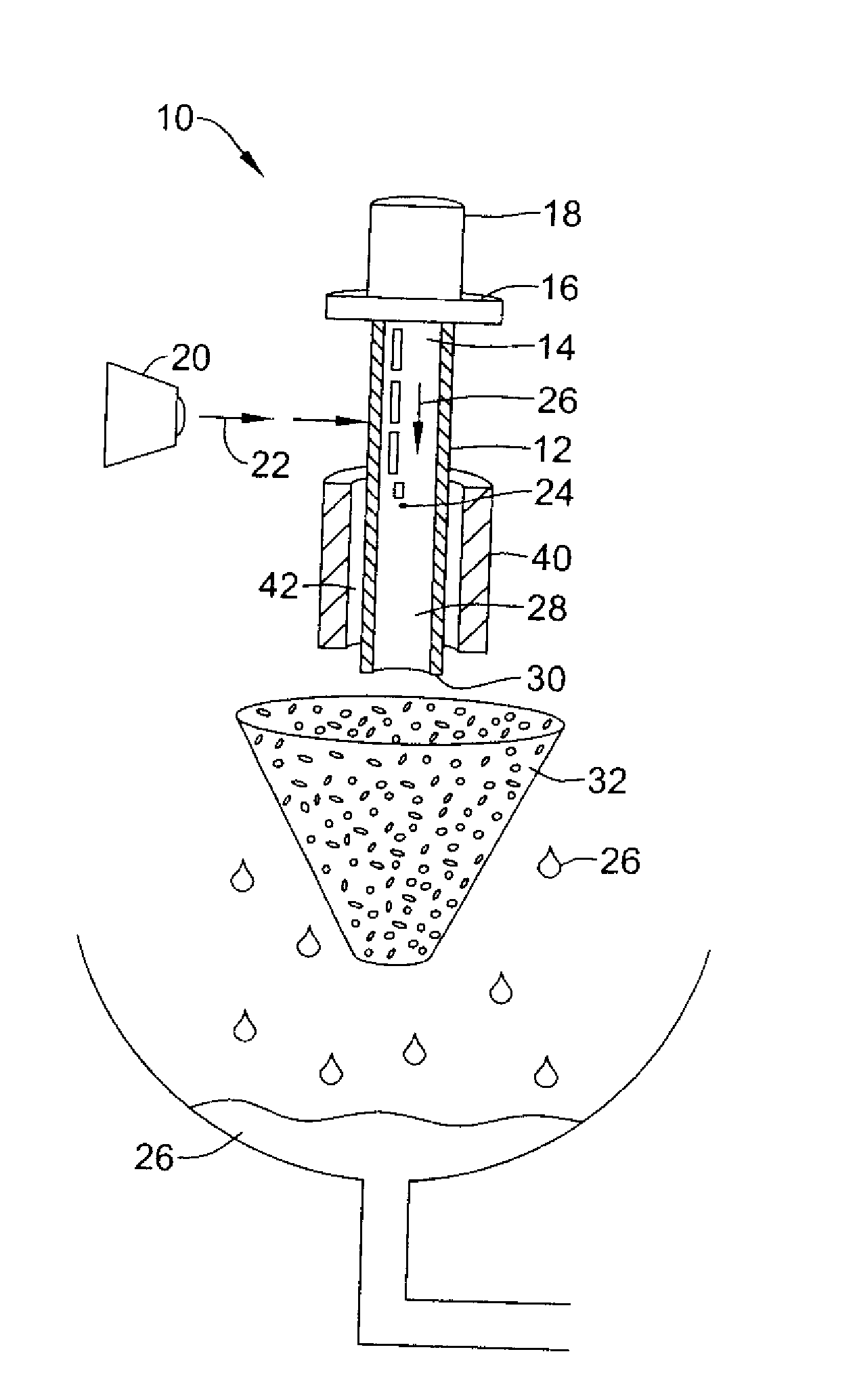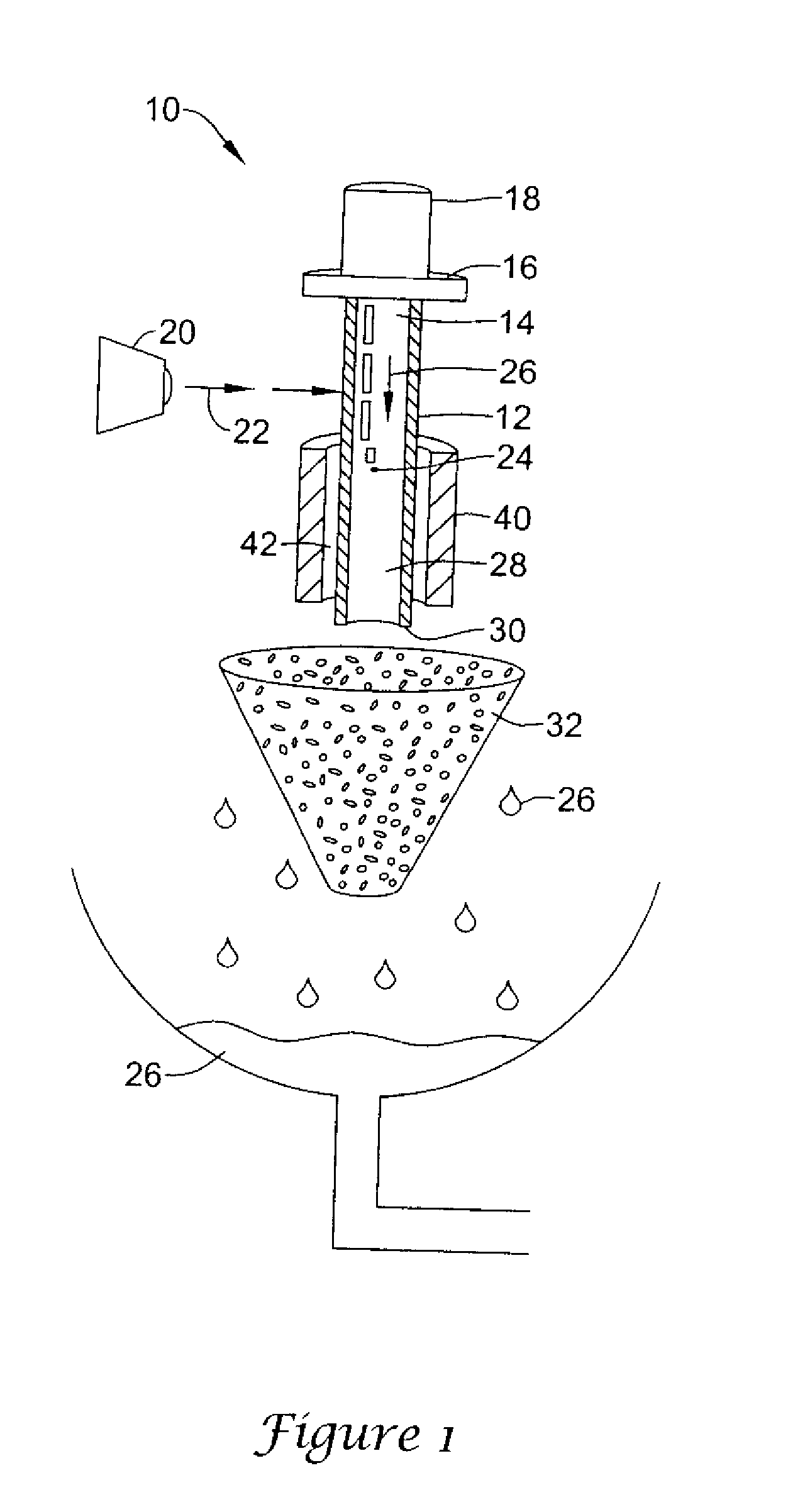Vertical stent cutting process
a cutting process and vertical stent technology, applied in the field of vertical stent cutting process, can solve the problems of melting dross on the inside edge of the cut tube, aggravate the problem of ridding debris from the tube, and the tube may tend to bow
- Summary
- Abstract
- Description
- Claims
- Application Information
AI Technical Summary
Benefits of technology
Problems solved by technology
Method used
Image
Examples
Embodiment Construction
[0037]While this invention may be embodied in many different forms, there are described in detail herein specific preferred embodiments of the invention. This description is an exemplification of the principles of the invention and is not intended to limit the invention to the particular embodiments illustrated.
[0038]For the purposes of this disclosure, like reference numerals in the figures shall refer to like features unless otherwise indicated.
[0039]As indicated above the present invention is directed to a variety of embodiments. In at least one embodiment, shown in FIG. 1, the invention is directed to a mechanism (system), indicated generally at 10, for processing and / or cutting a hollow tubular body 12 into a medical device such as a stent.
[0040]In the embodiment shown, the hollow tubular body 12 may be any type of tube suitable for laser processing and / or cutting. Such a tube 12 may be a tubular member suitable for the construction of a stent, graft, stent-graft, vena cava fil...
PUM
| Property | Measurement | Unit |
|---|---|---|
| energy | aaaaa | aaaaa |
| diameter | aaaaa | aaaaa |
| metallic | aaaaa | aaaaa |
Abstract
Description
Claims
Application Information
 Login to View More
Login to View More - R&D
- Intellectual Property
- Life Sciences
- Materials
- Tech Scout
- Unparalleled Data Quality
- Higher Quality Content
- 60% Fewer Hallucinations
Browse by: Latest US Patents, China's latest patents, Technical Efficacy Thesaurus, Application Domain, Technology Topic, Popular Technical Reports.
© 2025 PatSnap. All rights reserved.Legal|Privacy policy|Modern Slavery Act Transparency Statement|Sitemap|About US| Contact US: help@patsnap.com



